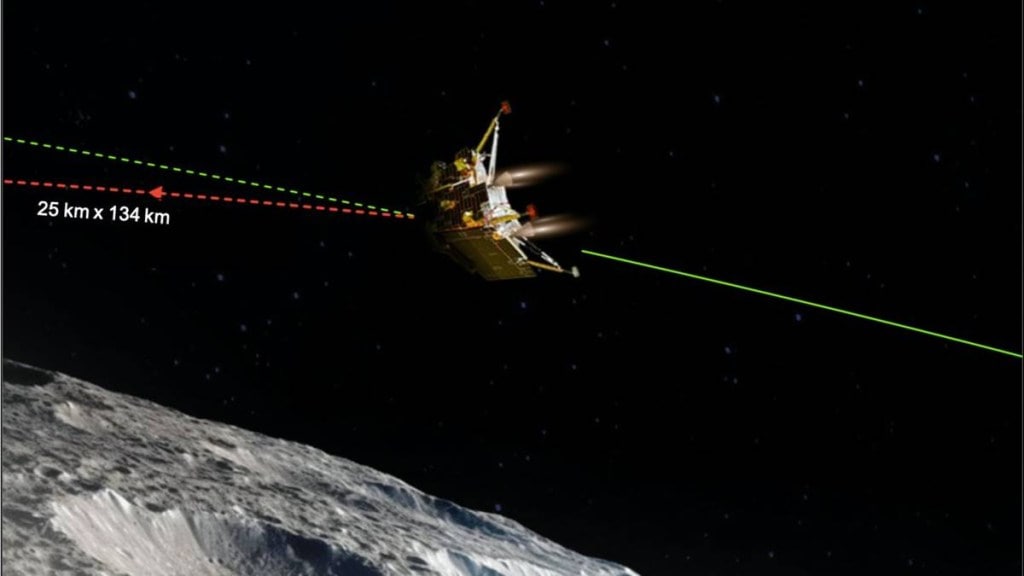Chandrayaan 3 mission is in its most critical phase now with the soft landing attempt only three days away. The Indian Space Research Organisation (ISRO) on Sunday announced that the Vikram Lander Module of Chandrayaan 3 successfully completed the second and final ‘deboosting’ operation that has successfully reduced the Lander Module orbit to 25km x 134km.
The role of Vikram
The primary objective of this mission is to assess the density of near-surface plasma (consisting of ions and electrons) on the Moon. The Vikram lander’s payload is designed to analyse seismic activity in the vicinity of the landing location. The rover’s payload will investigate the elemental makeup of the lunar soil.
Chandrayaan 3 mission: What will happen next?
Chandrayaan 3 comprises an independent Lander module (LM), a Propulsion module (PM) and a Rover. Its primary goal is to create and showcase novel technologies necessary for interplanetary voyages. The Lander will possess the capacity to gently touch down on a designated lunar location and release the Rover. This Rover, while on the move, will conduct on-site chemical examinations of the lunar terrain, contributing to our understanding of the surface composition.
Here is the Chandrayaan-3 mission detailed timeline
• July 6: ISRO declares the launch date of Mission Chandrayaan-3 as July 14, set to take off from Sriharikota’s second launch pad.
• July 7: Successful completion of vehicle electrical tests.
• July 11: Extensive 24-hour ‘Launch Rehearsal’ concludes, emulating the entire launch sequence.
• July 14: LVM3 M4 vehicle propels Chandrayaan-3 into its designated orbit.
• July 15: Successful execution of the first orbit-raising maneuver, achieving an orbit of 41762 km x 173 km.
• July 17: Second orbit-raising maneuver places Chandrayaan-3 in an orbit of 41603 km x 226 km.
• July 22: Fourth orbit-raising maneuver positions the spacecraft in an orbit of 71351 km x 233 km.
• July 25: Another effective orbit-raising maneuver.
• August 1: Chandrayaan-3 is positioned into a translunar orbit (288 km x 369328 km).
• August 5: Successful insertion into lunar orbit (164 km x 18074 km).
• August 6: Lunar orbit is adjusted to 170 km x 4,313 km.
• August 9: ISRO skillfully maneuvers the spacecraft to a lower orbit around the moon, achieving lunar orbit dimensions of 174 km x 1437 km.
• August 14: Chandrayaan-3 progressively approaches the moon’s surface, achieving an orbit of 150 km x 177 km.
• August 16: The Indian spacecraft performs its fifth and final Moon-bound maneuver, positioning itself in a nearly circular lunar orbit of 163 km x 153 km.
• August 17: The landing module, housing the Vikram lander and Pragyan rover, detaches from its propulsion system.
• August 18: Chandrayaan 3 successfully executes a ‘deboosting’ operation, reducing its orbit to 113 km x 157 km.
• August 20: Chandrayaan 3 successfully completed the second and final ‘deboosting’ operation that has successfully reduced the Lander Module orbit to 25km x 134km.
• August 23: The powered descent is expected to commence around 5:47 pm.
The mission’s success hinges on achieving a lunar landing during dawn, enabling a 14-day window for research before the lunar night descends. The rover’s operational capacity could be compromised due to plummeting temperatures beyond its tolerance level. If the situation demands, ISRO might opt to reschedule the landing for the subsequent available opportunity in September.

